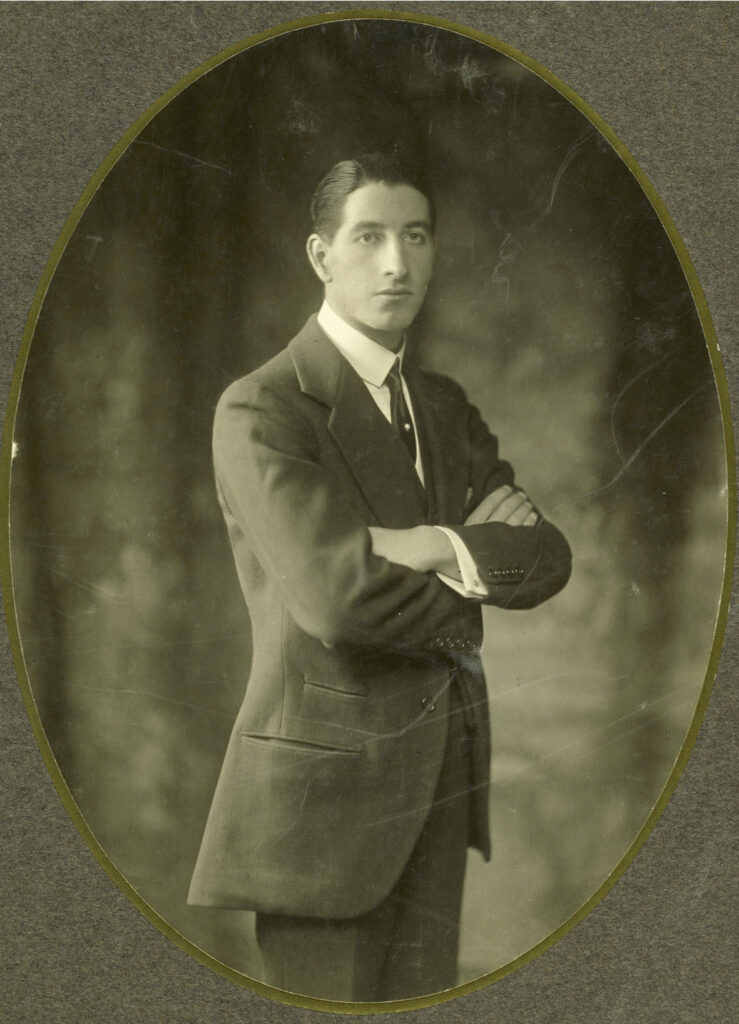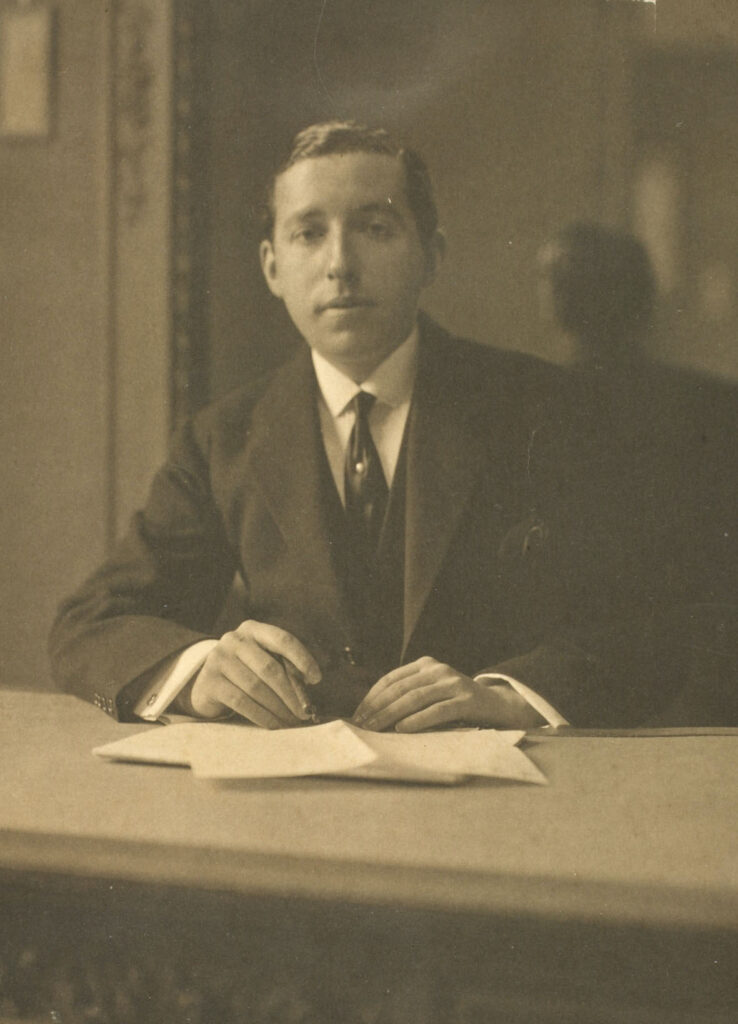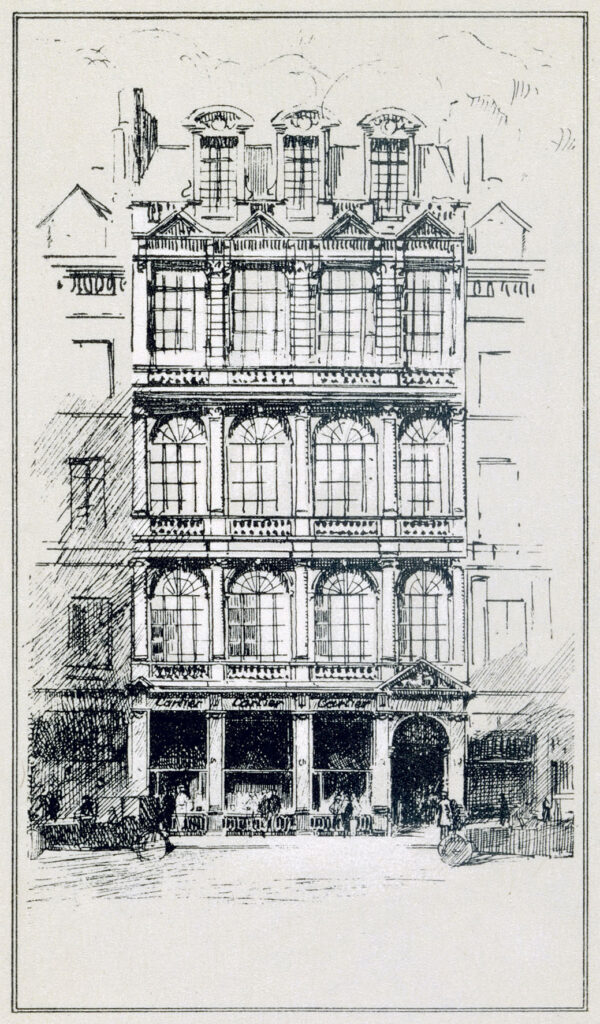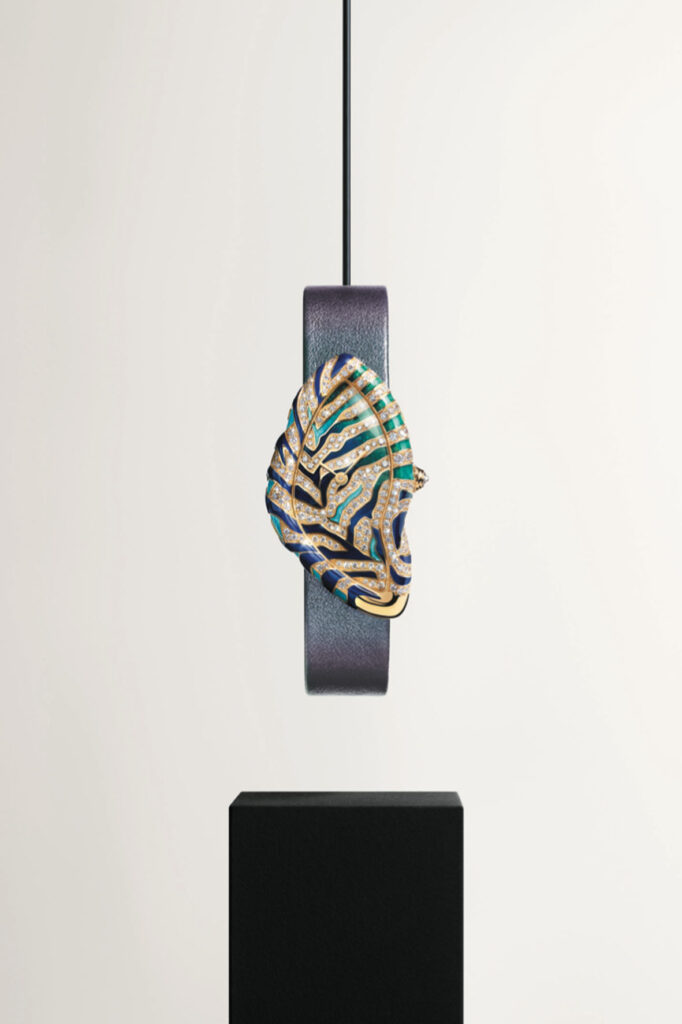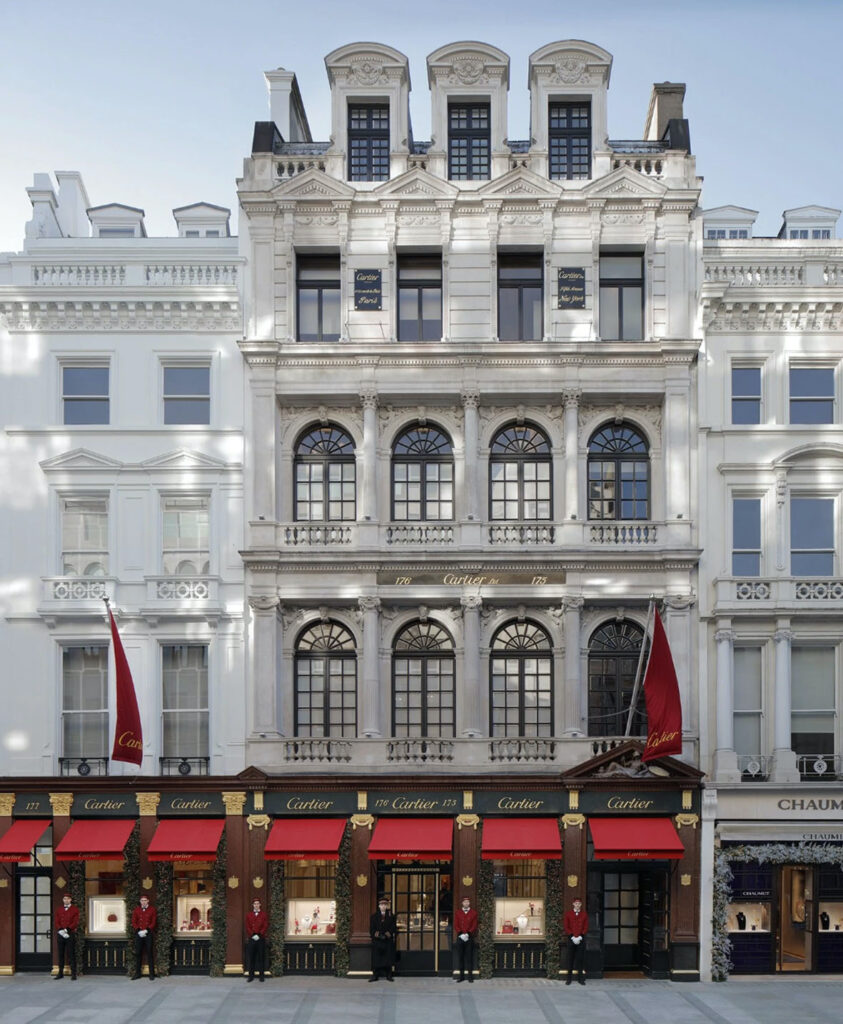Cartier Crash: The Wonderful Watchmaking “Accident”
6 June 2022The great Italian writer, publisher and artist Leo Longanesi once said that “art is an accident from which one never gets out unscathed.” A sentence that fits the Cartier Crash perfectly. A timepiece halfway between an accessory and a work of art, a magnificent “accident” that left a stylistic “wound” in traditional watchmaking – that Cartier proposed again at Watches and Wonders 2022. But let’s go step by step.
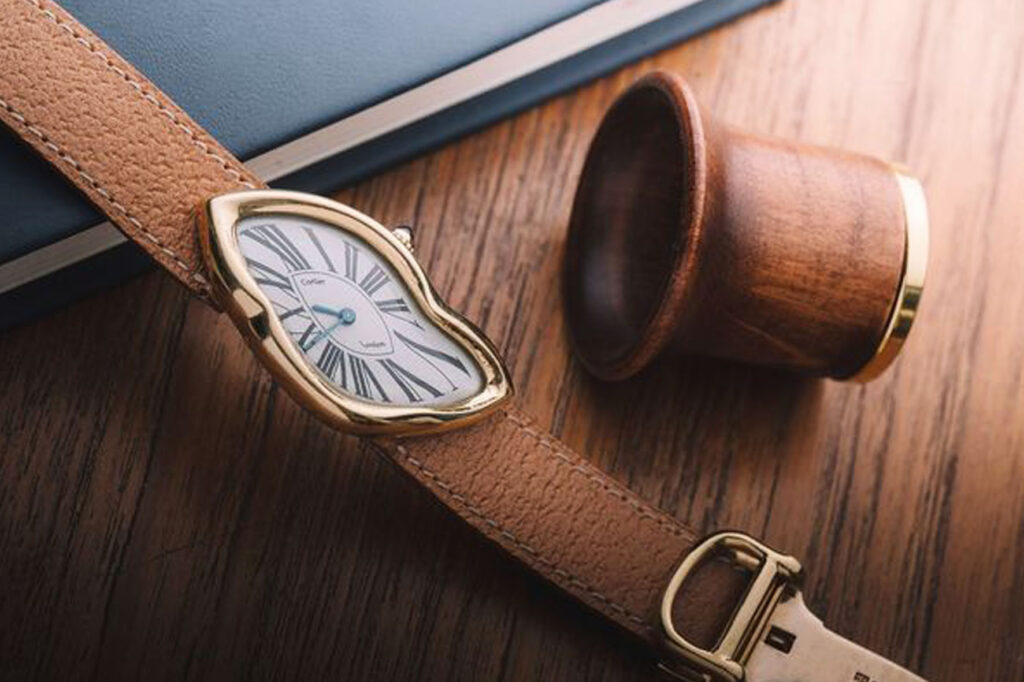
Indeed, the Cartier Crash is much more than a watch. It is a piece of watchmaking history that meets the history of European customs and culture, in a game of mutual influences that has produced one of the most recognizable and irreverent accessories ever, in a world made up of almost immutable rituals and traditions.
CARTIER CRASH AND SWINGING LONDON
Let’s start by recalling that the Cartier Crash is closely linked to a big European city. Paris? No, London. Because the Crash was the merger of different forces that crossed paths in Cartier London and in the British capital during the 1960s, the so-called “Swinging Sixties”. A period in which there was a growing interest in fashion and bold design, and during which the Cartier London laboratory stood out for its independence and creativity.
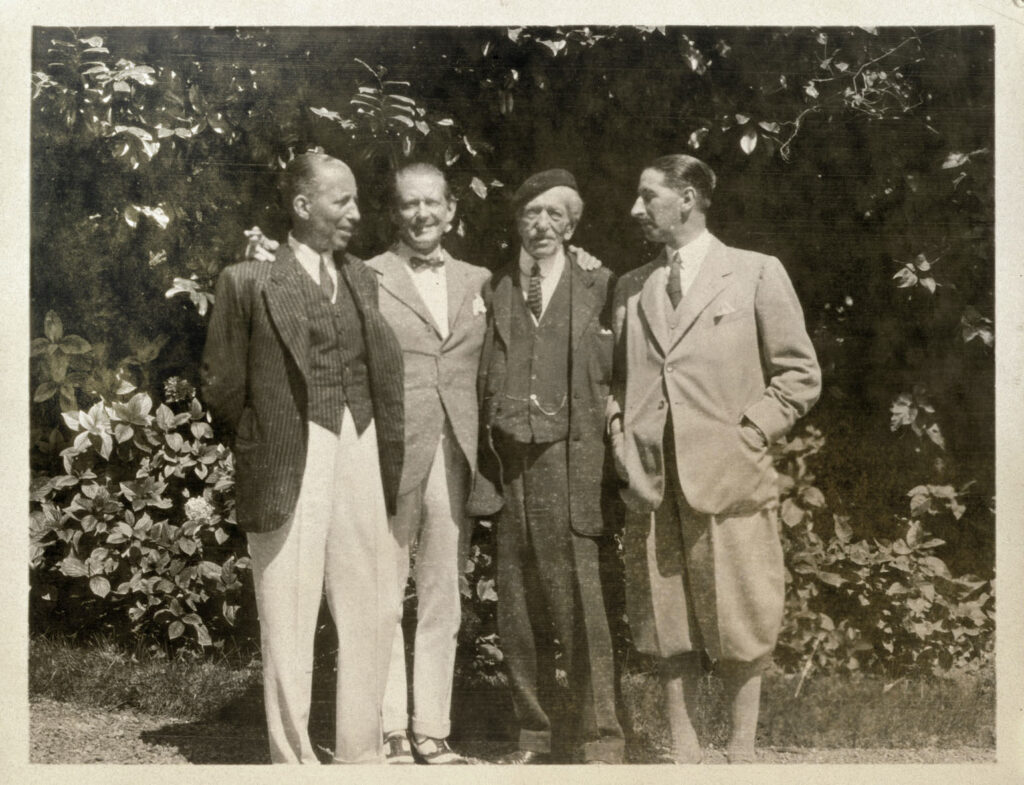
London not by chance. It was there, in fact, that Jacques and Pierre Cartier, grandsons of the founder of the Maison, Louis-François, opened one of the brand’s first offices outside Paris in 1902. They established Cartier’s house in Bond Street, where it is still located today. A headquarter that was an incredible hotbed of creativity, where goldsmiths, jewelers and other artisans designed and created specially commissioned jewels, even for royal coronations.
What about the watches? In the elegant salons of Bond Street, Cartier sold pieces from Switzerland and Paris, but nothing that was a direct creation of the brand. However, everything changed in the mid-1960s, when Jean-Jacques Cartier, son of the founder of the London branch of which he was then the head, decided that Cartier London would also produce its own watches. A transition that followed the death of Jacques’ brother Pierre in 1964, which led to the spin-off of Cartier’s activities in Paris, London and New York.
A decision that came at the right time, in the right decade. After the difficult recovery from the Second World War in the 1950s, the Sixties went through a unique creative fervor, a cultural revolution that started with the young and that saw London and England as European outposts. The ideal stage for a brand like Cartier, which pushed stylistic experimentation beyond the imagination, with a watch that captured the rebellious spirit of the time, overturning centuries-old patterns and conventions.
AN UNMISTAKABLE SHAPE
There are at least two interpretations on the origin of the shape of the Cartier Crash. The “easier” one speaks of a direct inspiration to the “soft clocks” in the famous painting by Salvador Dalì, “The Persistence of Memory.” An easy version, in fact: the limp shapes created by the Catalan artist are too similar with the curved and soft lines of the Crash.
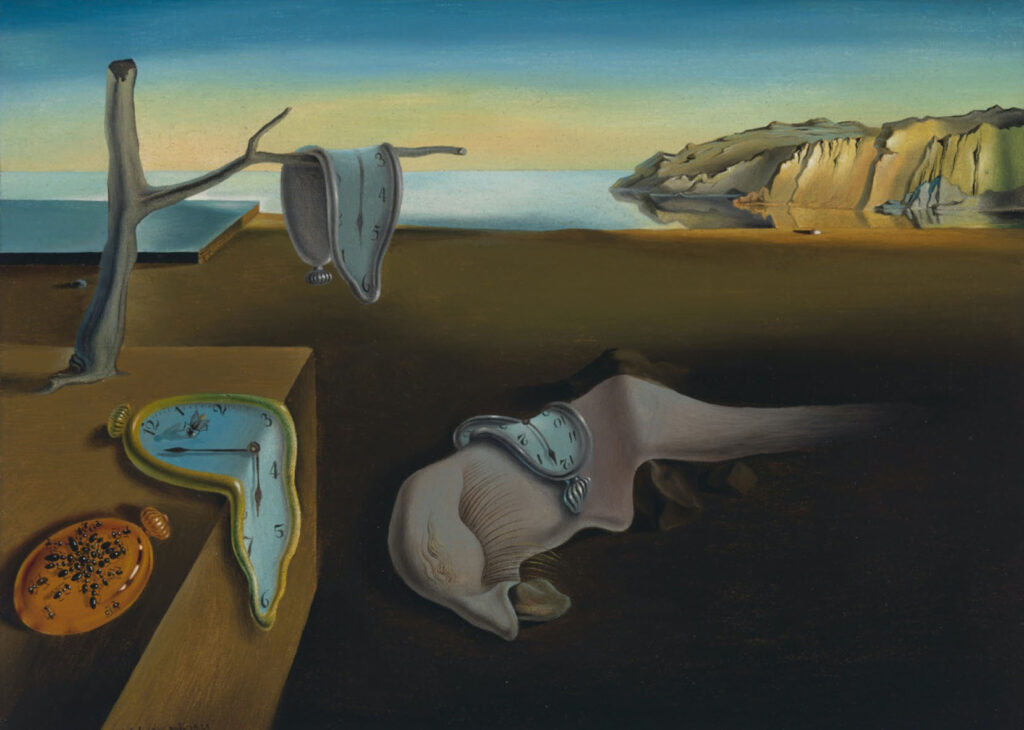
Another interpretation tells of a customer who brought his own Baignoire Allongée watch to the London boutique after a car accident that had melted and deformed the case. Looking at that scarred watch, a flash would have illuminated the minds of Cartier’s designers – that would have led to the creation of the Crash.
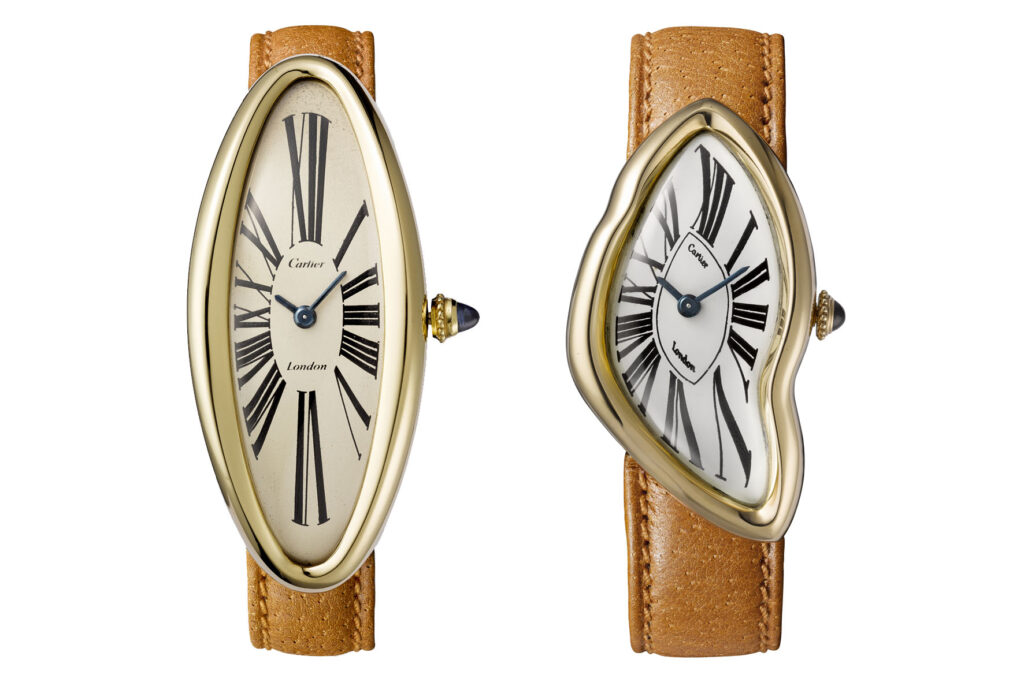
The version most close to reality is a third one and comes directly from the Cartier family, from Francesca Cartier Brickell, Jean-Jacques’ granddaughter and author of an important book on the history of the Parisian family. According to the author, Jean-Jacques Cartier loved design and loved being involved in the creative process of watches and jewelry, spending more time in the Bond Street workshops than behind the boutique counter. Thinking about new shapes and new alchemy for the brand’s watches, with Jean-Jacques there was the also the case designer Rupert Emmerson.
THE WATCHMAKING REVOLUTION
Jean-Jacques Cartier’s idea was to work on the shape of the Oval, one of the most classic watches released at that time by Cartier London, adapting it to the new sparkling and irreverent spirit that the 60s were bringing. Jean-Jacques Cartier suggested taking the case of the Oval, literally pinching the ends and folding it in the middle.
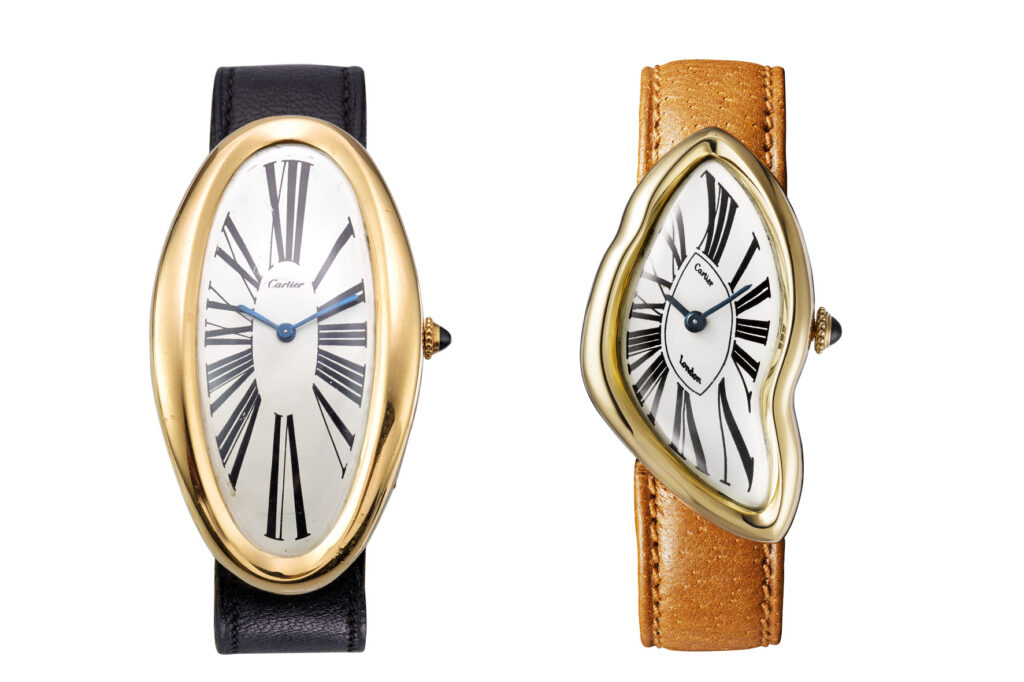
Emmerson and him were so in tune that it took the designer relatively little time to come up with several sketches, including one whose dial was decorated as if it were cracked, to push the Crash effect to the limit. In the end, the most convincing sketch was the one that led to the watch as we know it today, in a not-so-easy creation process.
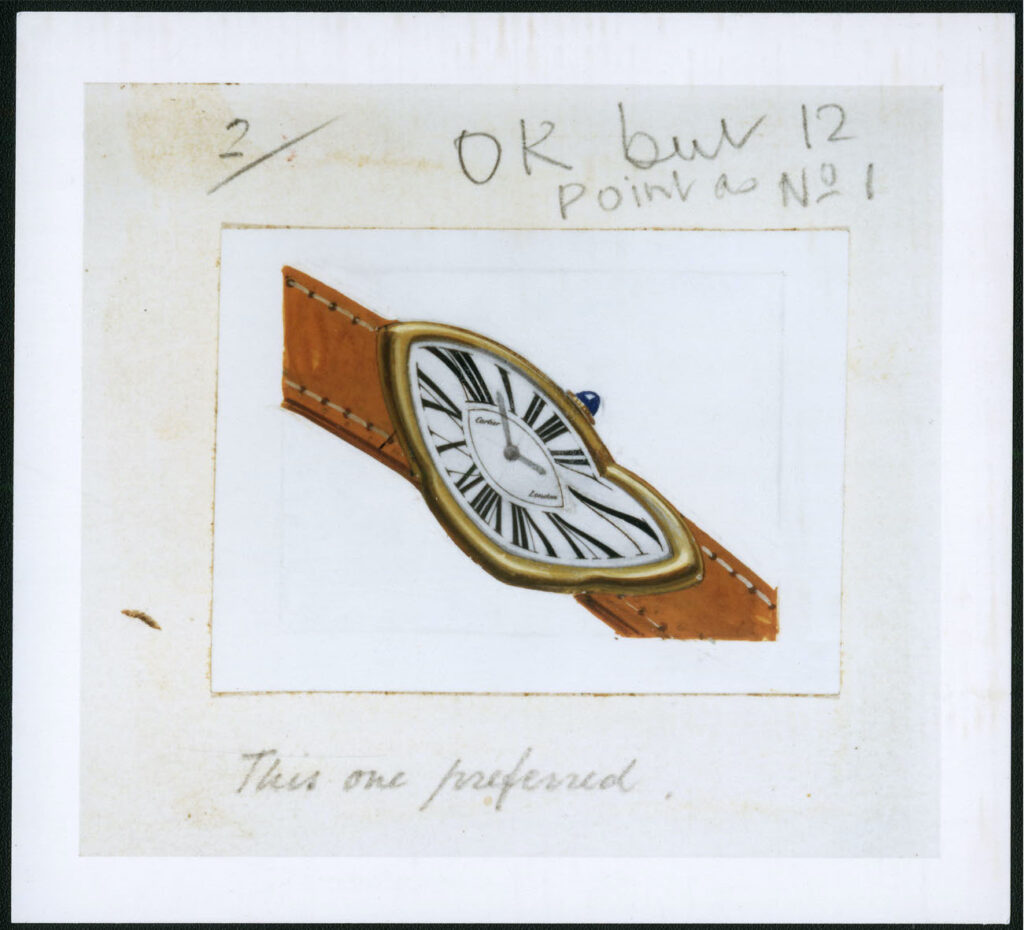
Beyond the mechanics, as the movement had to be encased in a tremendously asymmetrical case, there was also the need to make the hours easily legible on an equally asymmetrical dial. After several attempts, both constructive and decorative, the Cartier Crash came to light in 1967, available only in the London boutique.
A watch that Cartier always produced in very small numbers. It is believed that a only few dozen pieces of the first 1967 version were created, followed by another limited series, again at Cartier London in the 1980s. Whether due to industrial production limits or to the will to maintain the desirability of the watch, the low production numbers of the Cartier Crash have contributed to its success.
THE LIMITED EDITIONS
The same happened with the limited editions created starting from the early 90s. The watch was revived in 1991 by Cartier Paris in a series of 400 pieces with 38.5 mm by 22.5 mm yellow gold cases, with the word Paris on the dial instead of London. It was then extrapolated as a women’s watch with a diamonds bracelet in 2013: 267 pieces in pink gold, 267 in white gold in the versions with metal bracelets, 67 + 67 pieces in the versions with full pavé bracelets.
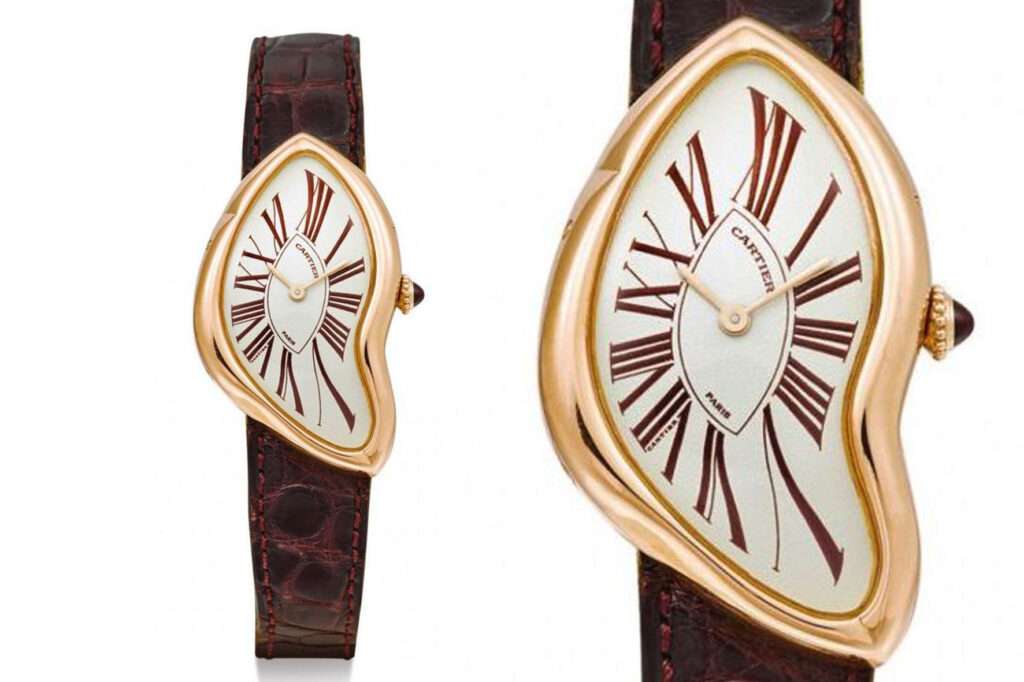
Then, in 2015, it was back with a gorgeous skeletonized version. Here the bridges of the movement, designed by Carole Forestier Kasapi, replicated the shape of the stylized Roman numerals. It was launched in a platinum edition of 67 pieces in 2015 with a case size of 45.32mm by 28.15mm; then 67 rose gold pieces of the same size in 2016. Both watches were powered by the manual caliber 9618MC.
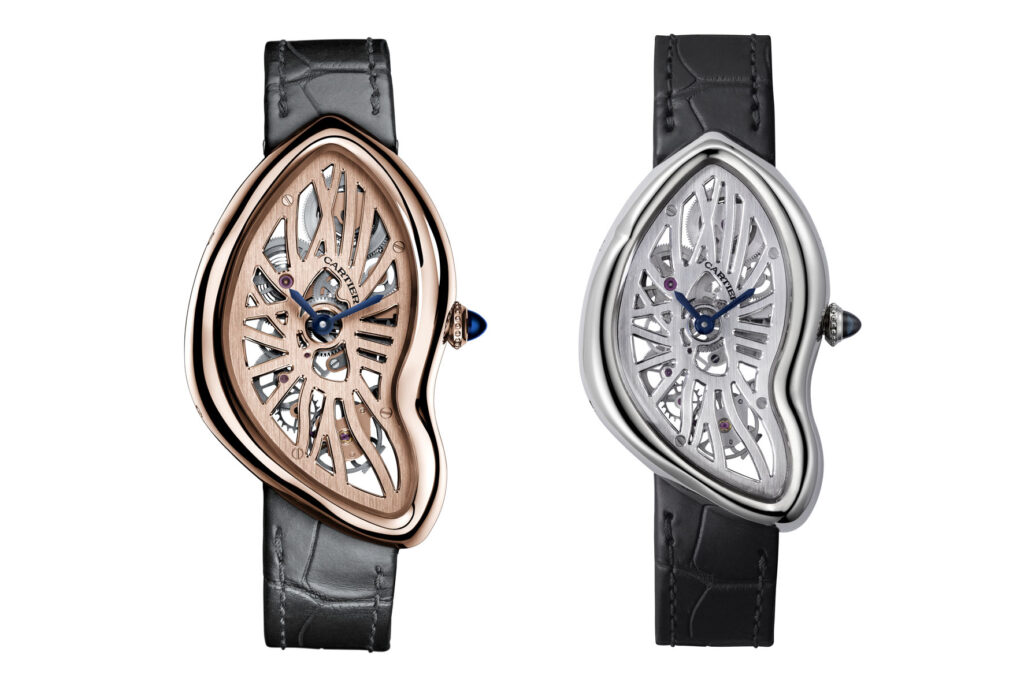
In 2018, Cartier unveiled the Crash Radieuse, with a pattern on the dial that mimicked the ripples of a pond. These ripples flowed into the 42mm by 23.3mm case, making the watch one of the most unique versions of the Crash ever created.
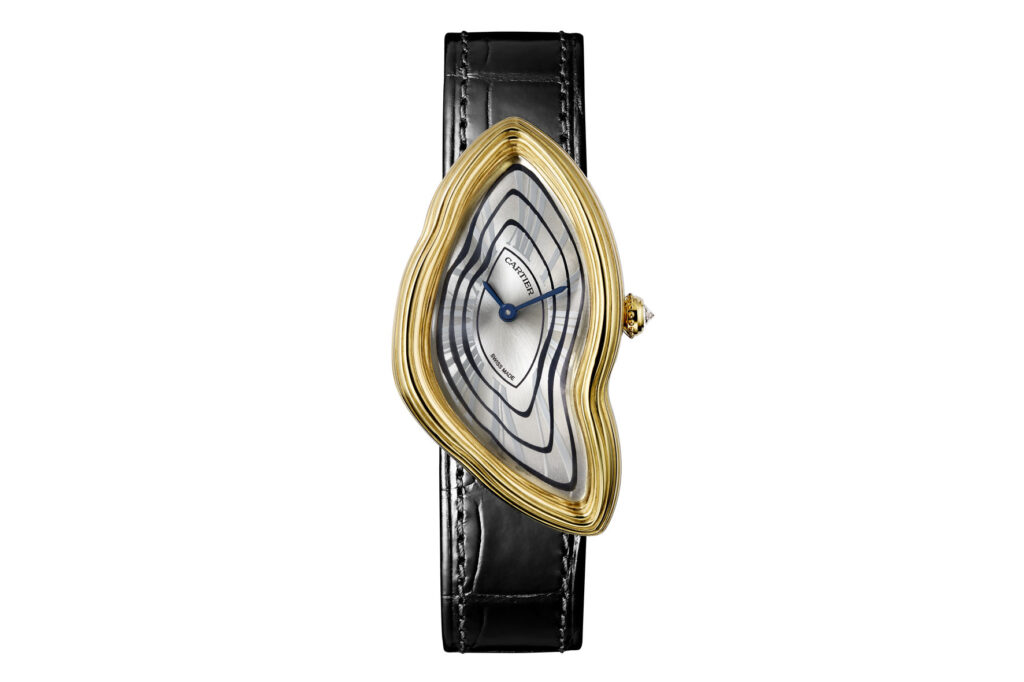
In the same year, Cartier also relaunched the Crash as a watch available for purchase in the London boutique as a tribute to the incredible history of the model. These 38.5mm by 22.5mm watches featured Swiss Made on the dial instead of London. However, the watch was limited to just one piece per month, which created a virtually endless waiting list. There was also a 15-piece edition in white gold and diamonds launched in the London boutique as part of this initiative.
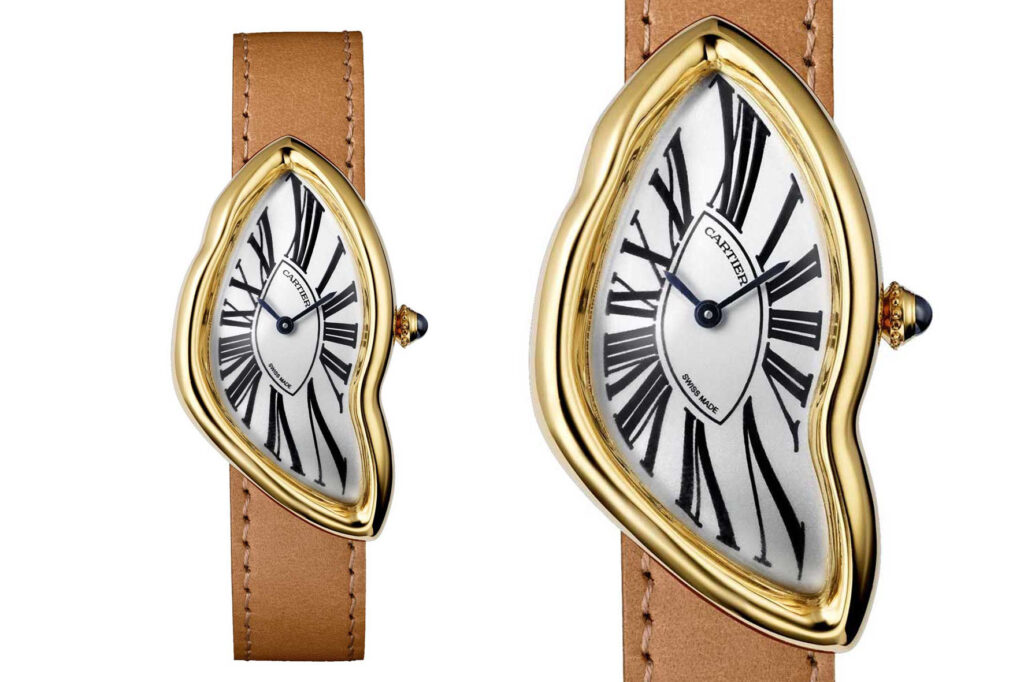
2022: THE CARTIER CRASH IS BACK
After several years, the watch is back among the brand’s collections. Watches and Wonders 2022 was the stage on which the Cartier Crash made its appearance, dressed in an original and very precious suit tailored by the artisans of the Maison des Métiers d’Art. Once again, therefore, Cartier has chosen extreme originality, because a disruptive watch can never be ordinary, especially if it is precious. Like the Crash Tigrée.
Here, the case and the dial become a tribute both to Cartier’s African bestiary and to the incredible craftsmen of the Maison, who created this timepiece bringing the arts of enameling, gem setting, stone cutting and goldsmithing to the highest levels.
A KNOW-HOW MASTERPIECE
Enamel, diamonds and gold are the protagonists of the Cartier Crash Tigrée, starting from the bezel. Here, the stripes are made of champlevé enamel, a technique in which the holes of the object to be decorated are filled with vitreous enamel; the object is then passed into an oven until the enamel melts and, once cooled, is smoothed and polished. Some stripes are interspersed with rows of set diamonds, which give shine and create an even more accentuated movement of the sinuous lines of the watch.
The highly refined workmanship continues on the dial, where the craftsmanship of Cartier’s Métiers d’Art is expressed in the champlevé enameling, setting and metal engraving. The motifs of scales or rays are first engraved, then enameled on a silver leaf. They have shades of green and blue, emblematic of Cartier, which the enameller creates starting from copper oxide and cobalt oxide respectively.
The watch’s enameling process requires over 10 passages in the oven at a temperature between 750 and 700 degrees Celsius, depending on the color you want to obtain. At the beginning, the work is focused on the underlying layers, and then the craftsman gets to the glazes visible on the surface. He works gradually according to the cooking temperatures, which range from the highest to the lowest: navy blue is the first color, then turquoise and translucent green appear.
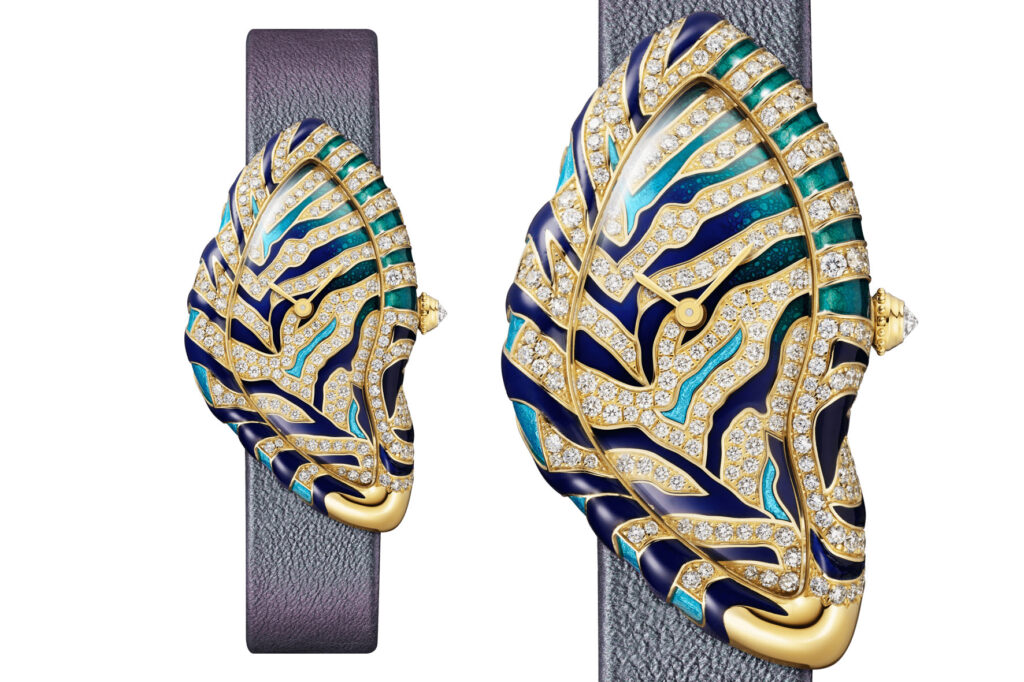
A touch of further unpredictability is given at the lower end of the bezel, where gold is left exposed: enamels and stones retract, as if touched by an invisible hand that wants to reveal the metal in all its glory.
The case (which is 43.68 × 24.26mm wide and is 10.08mm thick), the dial and the clasp are set with 242 brilliant-cut diamonds totaling 1.64 carats. Placed on the crown, a 0.09 carat diamond with an inverted pavilion: Cartier’s aesthetic signature.
THE MOVEMENT: A TRIBUTE TO CARTIER’S HISTORY
The Cartier Crash Tigrée is a beautiful watch on the outside, but its “engine” is also top notch. It is the hand-wound 1917 MC in-house caliber, measuring 16 × 12.95mm and is less than 3mm thick. It beats at 21,600 vibrations per hour and has 38 hours of power reserve. Its name is a tribute to the year the Tank watch was created.
The challenge faced by the Maison’s master watchmakers in creating it was to adapt the standard round movements to the shapes of Cartier’s cases. It has a tonneau shape and is decorated with the Côtes de Genève motifs, as befits a refined and elegant watch. A paramagnetic alloy shield is integrated into the case to ensure adequate protection of the movement from magnetic fields, which can compromise its functionality and accuracy.
A WATCH FOR ONLY FEW
Cartier has chosen a more-than-reliable caliber with a history of excellence for the return of the Crash. The return of a very “insane” timepiece, just as we like it. And since we are curious, we wondered if it really is a watch for only few; if a client of another boutique, such as Milan’s, who wants to buy a Crash must necessarily go to London or can have it delivered to Milan without having to cross Europe.
Well, from the Cartier headquarters they replied that “the most iconic Crash pieces (for instance the one in yellow gold, plain dial, with the black roman numerals, or the diamonds-paved model in white gold) are New Bond Street exclusives, and can be ordered via a waiting list. The client must go to the New Bond Street boutique himself.“
And so, we pushed our curiosity further, because we know that there are unique Crash pieces created by and for super top clients. How are these customizations born? Here is what they replied: “It is possible to order a Crash watch via a Special Order. As such, the watch must be different from the original models sold in London. Clients have the possibility to play with the colors and materials according to their taste, but within the boundaries of Cartier’s DNA. This service is open to all our collectors. Regarding the Crash, the number of orders remains limited, as it is one of the rarest watches on the market.”
This is the reason why so many celebrities adore it. In 2018, singer and producer Kanye West posted a photo of his watch on Twitter, triggering the Crash fever and its auction prices.
Will it also happen with the Crash Tigrée? That’s possible, given that it is a watch worth € 110,000, made in a limited and numbered edition of 50 pieces: a more than justifiable choice given the technical complexity required to make it. We’ll see. Meanwhile, we were able to touch it and wear it in Geneva, and we could only say “wow!” And, with a little melancholy, it reminded us of that Swinging London that we’ve never experienced.
Dy Davide Passoni
Credits Photo: Phillips, A Collected Man, European Watch Comany

